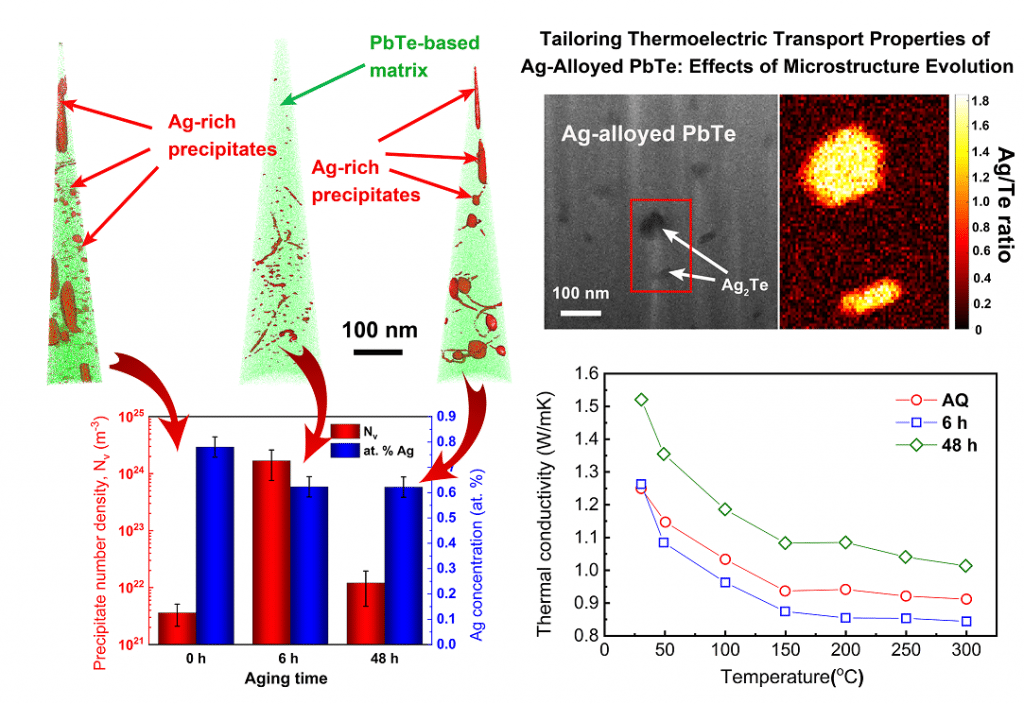
Invited:
TRACKING MICROSTRUCTURE EVOLUTION OF AG-ALLOYED PBTE FOR THERMOELECTRIC ENERGY CONVERSION APPLYING ATOM PROBE TOMOGRAPHY
2--, Max-Planck Institut für Eisenforschung GmbH, Düsseldorf, Germany
3I. Physikalisches Institut (IA), RWTH Aachen, Aachen, Germany
4JARA-Institut Green IT, JARA-FIT, Forschungszentrum Jülich GmbH and RWTH Aachen University, Aachen, Germany
Capturing and converting waste heat into electrical power through thermoelectric generators based on the Seebeck effect is a promising alternative energy source. Among thermoelectric compounds, PbTe can be alloyed and form precipitates by aging at elevated temperatures, thus reducing thermal conductivity by phonon scattering. Here, PbTe is alloyed with Ag to form Ag-rich precipitates having a number density controlled by heat treatments.
We employ complementary scanning transmission electron microscopy (S/TEM) and atom probe tomography APT to analyze the precipitate number density and the PbTe-matrix composition. This combination enables us accurate determination of the iso-concentration surfaces on a quantitative basis.
We measure the temperature dependent transport coefficients, and correlate them with the microstructure. The thermal and electrical conductivities, as well as the Seebeck coefficients, are found to be highly-sensitive to the microstructure and its temporal evolution, e.g. the number density of Ag- rich precipitates increases by ca. three orders of magnitude and reaches (1.68 ± 0.92)×1024 m-3 upon aging at 380 °C for 6 h, which is pronounced by reduction of thermal conductivity to a value as low as 0.85 Wm-1K-1 at 300 °C.
Application of APT in this study provides us, for the first time, meaningful information on the nanostructure-property relationship. Our findings will help to guide predictive tools for further design of materials for energy harvesting.

Powered by Eventact EMS